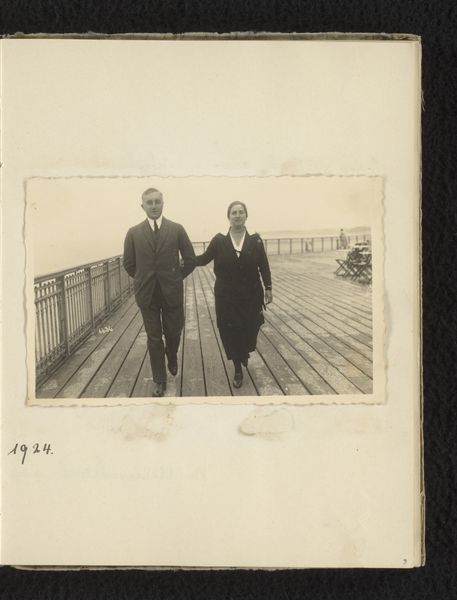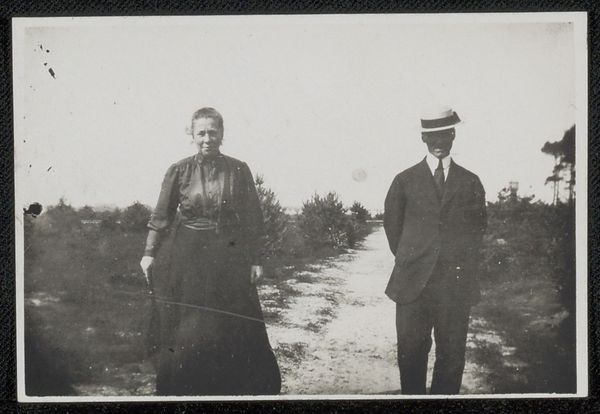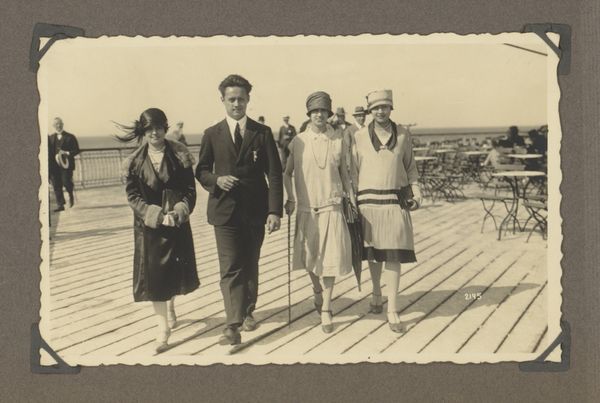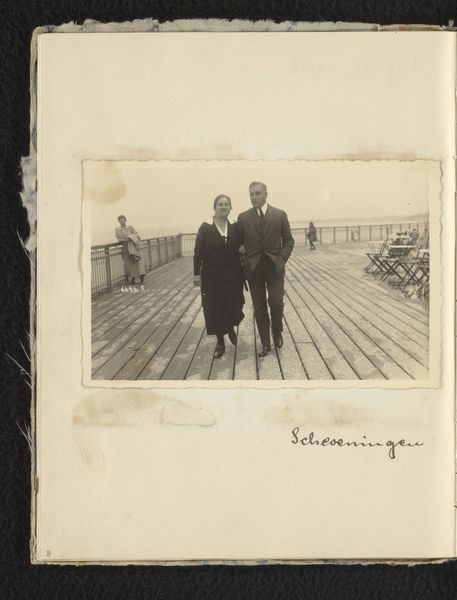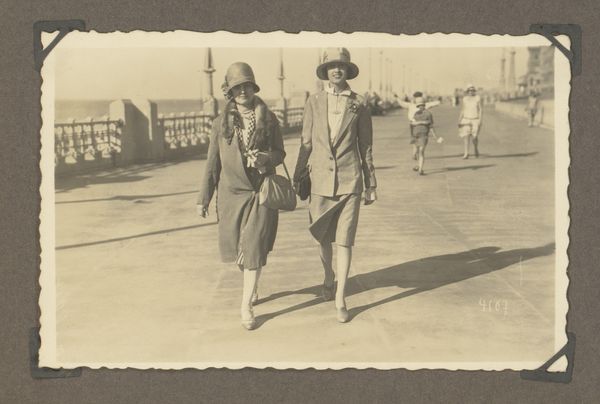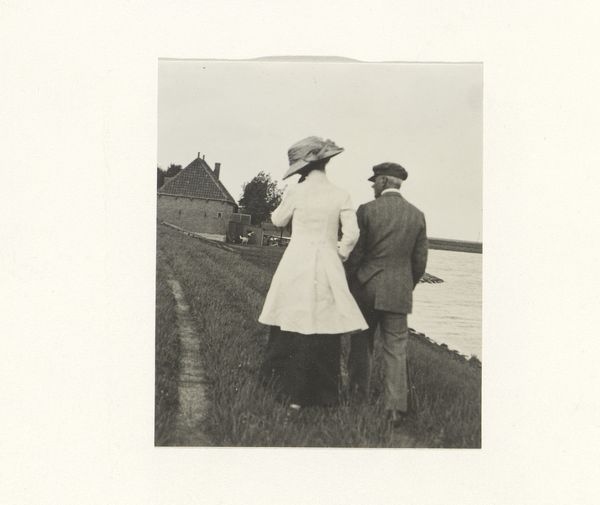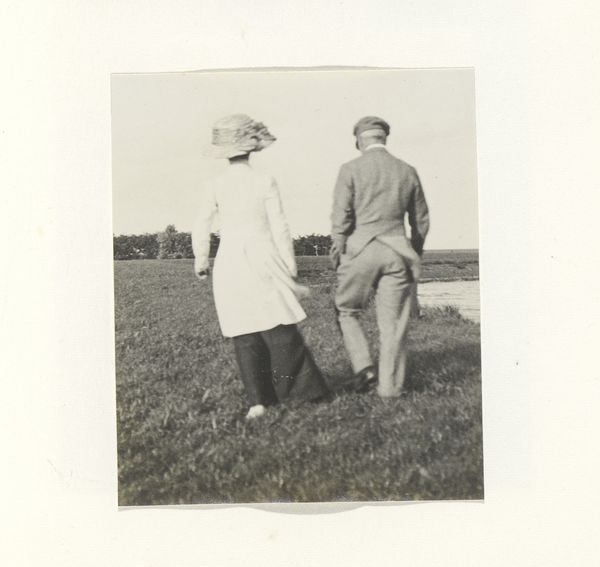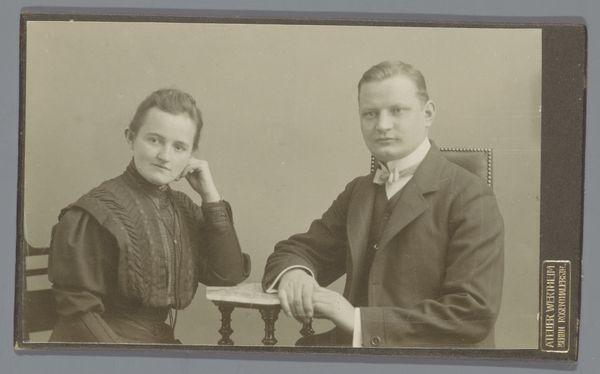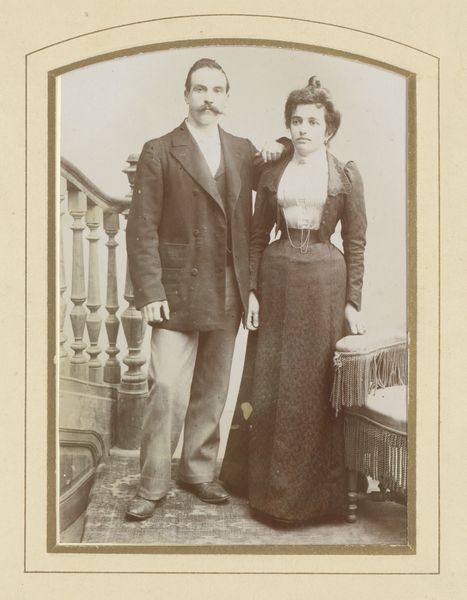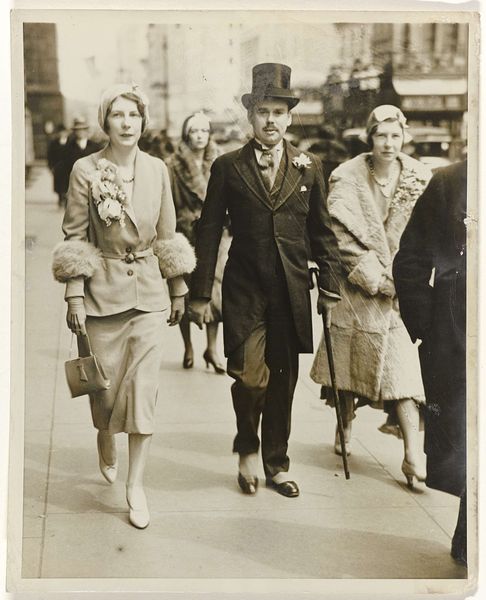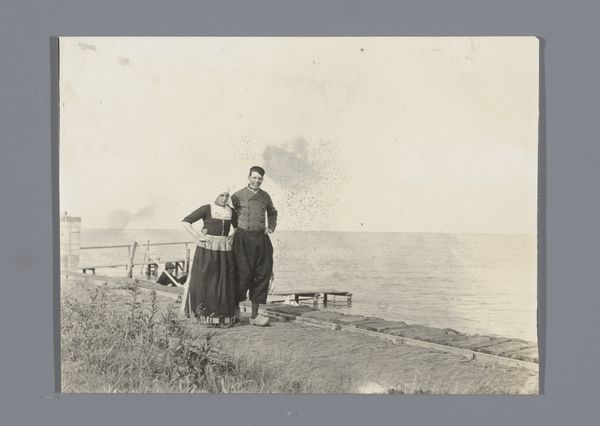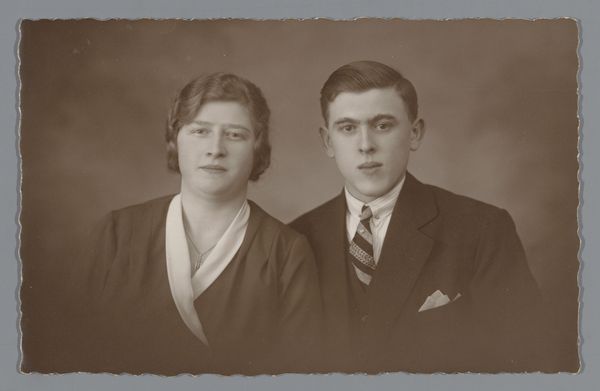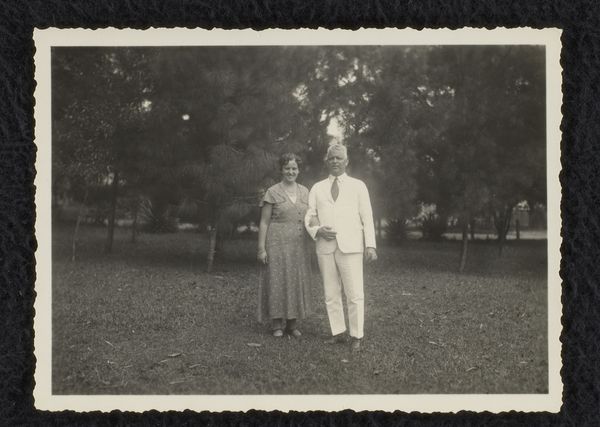
photography, gelatin-silver-print
#
portrait
#
wedding photograph
#
wedding photography
#
outdoor photograph
#
archive photography
#
photography
#
historical photography
#
couple photography
#
gelatin-silver-print
Dimensions: height 90 mm, width 140 mm
Copyright: Rijks Museum: Open Domain
This anonymous photograph, part of the Estate of Isabel Wachenheimer, captures a moment with a muted palette, somewhere between memory and a dream. The grey-scale flattens the scene, emphasizing the textures – the grain of the wooden planks, the fabric of their clothes, and the distant, blurred horizon. I keep coming back to the way they hold each other’s arm, a formal gesture that’s simultaneously intimate and restrained. You can almost feel the slight resistance, a gentle pull in opposite directions, or a push to move forward. The number 6636 in the corner is like a secret code, adding a layer of mystery. Looking at it, I'm reminded of Eugène Atget’s photographs of Paris – those empty streets and buildings filled with a sense of melancholy and longing. But where Atget documented a city, this photograph captures a fleeting human connection against a vast, indifferent landscape. It's a reminder that art, in all its forms, is about finding meaning in the everyday, about holding onto moments that might otherwise slip away.
Comments
rijksmuseum about 2 years ago
⋮
The German Eugen Wachenheimer had a brilliant career at the Deutsche Bank and served as a naval officer in the First World War. In 1922 he married Else Moos. The Anti-Jewish laws instituted by the Nazi regime forced them to flee to the Netherlands in 1937. The photograph at the lower right is the last one taken of Eugen. He stands with his back to the camera behind his daughter. Eugen and Else were gassed at Auschwitz-Birkenau in 1944.
Join the conversation
Join millions of artists and users on Artera today and experience the ultimate creative platform.
